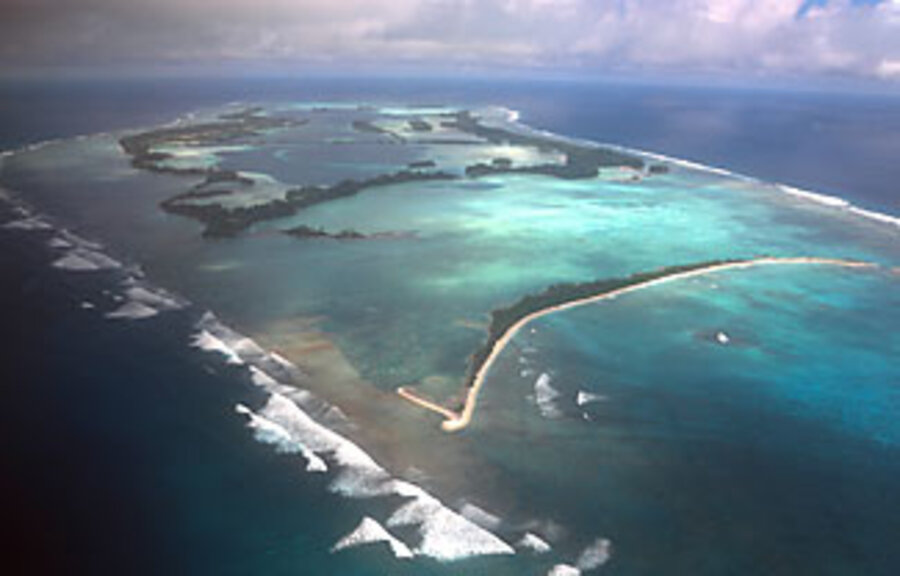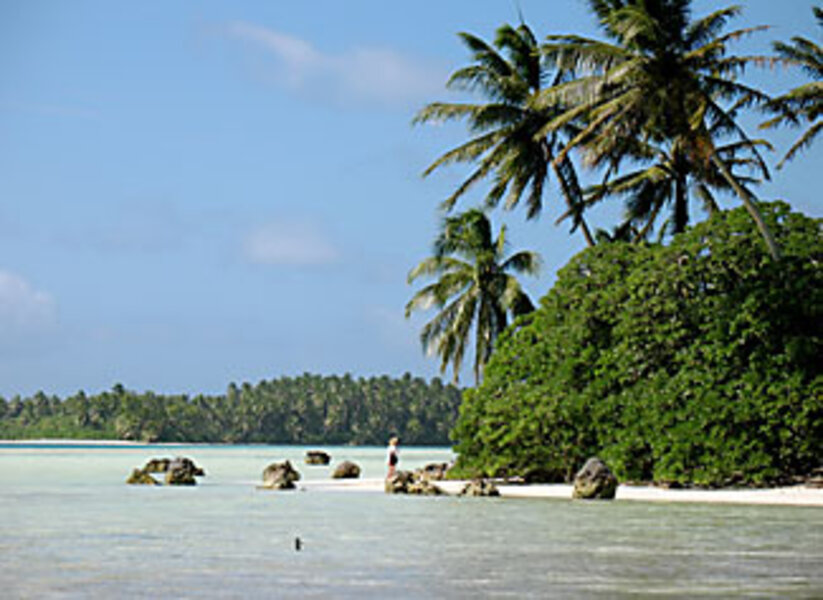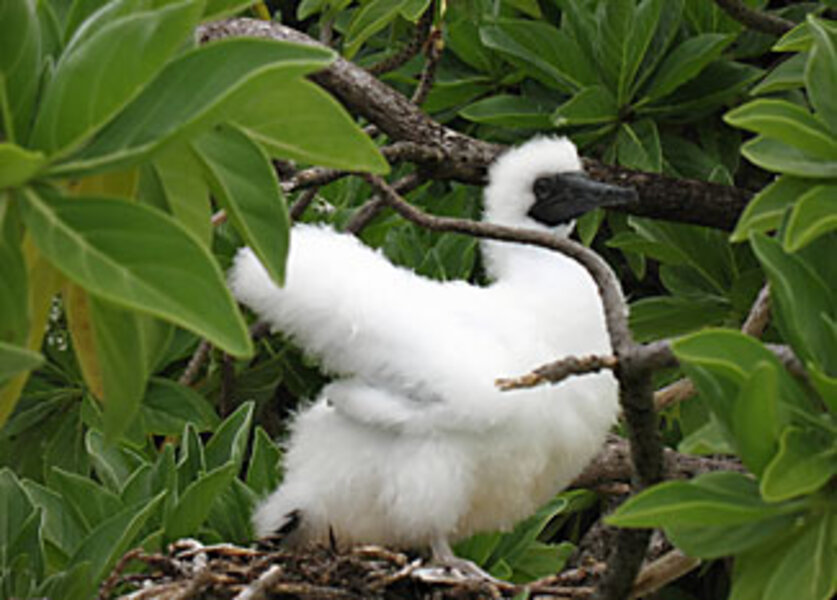Eye to beak with a red-footed boobie!
Loading...
There are many special places on our planet that need protection. Palmyra Atoll, a speck of land lying in the middle of the Pacific Ocean about 1,000 miles south of Hawaii, is one of them. It is home to an abundant variety of animals that scientists are now studying.
A Hawaiian king claimed Palmyra in the 19th century, and the atoll became part of US territory when Hawaii was annexed in 1898. Eight years ago, Palmyra was purchased by the Nature Conservancy, an environmental organization that now manages and helps protect the atoll in conjunction with the US Fish and Wildlife Service.
Like most atolls, Palmyra consists of a lagoon surrounded by numerous small islands called islets. With an area of just 230 acres – barely a quarter the size of New York City's Central Park – densely forested Cooper Island is the largest of Palmyra's 50 islets and serves as base camp for visitors, such as chef Michèle Gentille. Ms. Gentille, who lives in New York, arrived on Palmyra in March to cook for the half-dozen researchers, staff, and volunteers currently working there.
"It's lush with life here," says Ms. Gentille, from her computer-linked satellite phone on Palmyra. "Birds are everywhere, hermit crabs crawl all over the ground, and the water is teaming with fish. The island feels like a living entity."
Much of Palmyra's life originates in its warm, shallow, tropical waters and coral reefs that are home to threatened green sea turtles, pilot whales, bottle-nosed dolphin, numerous fish and shark species, giant clams, and manta rays.
"In the evenings on the dock, we turn on the lights to attract phytoplankton," says Ms. Gentille, referring to free-swimming microscopic ocean plants that provide food for other marine creatures. "The manta rays glide to the surface to eat it; it's an incredible sight."
According to Healy Hamilton, an evolutionary biologist who heads up the island's scientific research, the best way to protect Palmyra is to study its animals, plants, and fragile coral reefs.
"Palmyra is an extremely unique natural laboratory because of its location in the Pacific," said Dr. Hamilton by phone from her San Francisco office at the California Academy of Sciences. "The ocean there experiences some of the widest ranges of surface water temperature and acidity, which are two of the most important factors for marine organisms."
Dr. Hamilton says researchers can also learn about climate change from Palmyra's ancient, untouched coral, which contains a record of water temperatures dating back more than 1,000 years and may provide clues to trends in global warming.
"We are also cataloging the biodiversity on Palmyra," she added. To do this, scientists must first identify all the terrestrial and marine animals in the area, then determine how they interact with one another to create Palmyra's delicate ecosystem.
Dr. Hamilton says that the Palmyra researchers are permitted to catch a small quantity of certain fish for food, but it can be a challenge. "It's hard to get a hooked fish on board before the sharks get to it," she says. "There are few places left in the world like that, so we are also studying this unique marine ecosystem that supports so many predators."
On land, Palmyra's most unusual inhabitants are giant coconut crabs – also known as robber crabs because they sometimes raid human camps to steal food. "They are truly one of the world's most amazing animals," says Dr. Hamilton.
Alex Wegmann is currently completing a doctoral degree and has lived on Palmyra for two years studying its animals.
"Coconut crabs are actually hermit crabs that use snail shells for protection until they are about 1 year old," said Mr. Wegmann by phone from Boston, where he was attending a conference. "As their own shell calcifies [hardens], they shed the snail shell."
He says that adult coconut crabs can weigh more than 10 pounds and develop a leg span of two to three feet, making them one of the largest crabs in the world. Their claws are so strong that they can break open coconuts and eat the coconut flesh inside. Although the crabs are protected on Palmyra, Mr. Wegmann says that people in other Pacific regions have long collected and eaten coconut crabs, and their numbers have declined in most areas.
Human visitors to Palmyra also share their limited living space with 29 species of birds that visit the atoll, which has some of the world's largest nesting colonies of red-footed boobies. Spectacular as adults with their pale-blue beaks and bright-red feet, the booby chicks begin life with black beaks protruding from what resembles a ball of white cotton candy. "The young are so fluffy that they look almost as big as adults," says Ms. Gentille, who photographs the birds as she walks along the beach. "They nest in trees by the water, and the babies just stare as you pass by."
Unlike the birds, which have no shelter from the 175 inches of annual rainfall on Palmyra, Ms. Gentille and her fellow "castaways" live in rustic, green cabins that are designed to blend in with the surrounding tropical foliage. Aside from a generator that provides electricity for lighting, refrigeration, and research equipment, they are content to live with few luxuries.
"It's comfortable, but not a resort," Ms. Gentille stresses. "All of us on Palmyra are focused on conservation and are working to save one of the last precious jewels the planet has left."







